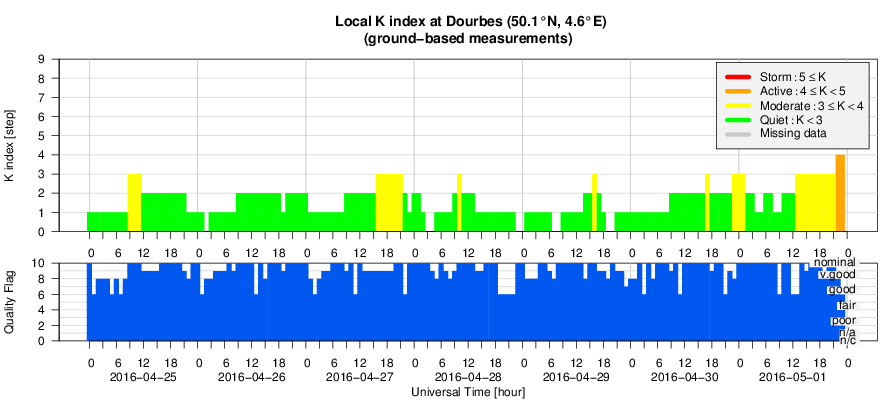- Table of Content
- 1.One year with ...
- 2.Mercury Transi...
- 3.PROBA2 Observa...
- 4.Review of sola...
- 5.The Internatio...
- 6.Geomagnetic Ob...
- 7.Review of iono...
- 8.Future Events
- 9.New documents ...
2. Mercury Transit - May 9
3. PROBA2 Observations (25 Apr 2016 - 1 May 2016)
4. Review of solar and geomagnetic activity
5. The International Sunspot Number
6. Geomagnetic Observations at Dourbes (25 Apr 2016 - 1 May 2016)
7. Review of ionospheric activity (25 Apr 2016 - 1 May 2016)
8. Future Events
9. New documents in the European Space Weather Portal Repository
One year with no X-class flares
X-class flares are "eXtreme" x-ray solar events, 10 times more powerful than a "medium" M-class flare, and 100 times more powerful than the "common" C-class flares. Today (5 May), it is precisely one year ago since the most recent X-class flare was recorded, an impulsive X2.7 flare produced by NOAA 2339 (see this press item at http://www.stce.be/news/306/welcome.html ). Underneath imagery shows the flare in extreme ultraviolet light (left; SDO/AIA 131) near the time of its maximum intensity, and the source sunspot region in white light (right; SDO/HMI).
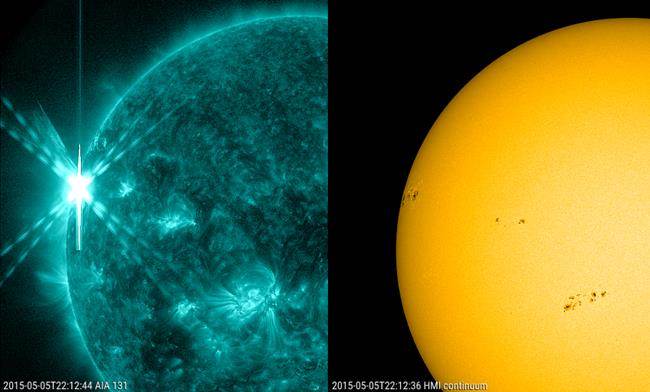
So far this solar cycle (SC24), there have been 45 X-class events recorded by the GOES spacecraft. That's quite a bit less than during previous solar cycles. For example, solar cycle 23 (1996-2008) counted a total of 126 extreme events. Of course, the current SC24 is not over yet. Indeed, averaging per year the total number of X-class flares over the last 3 cycles, the bar-diagram underneath shows that there is a second peak of "eXtreme" flares about 2-3 years after the year with maximum yearly sunspot number (mind the large deviations from these averages...). A typical example are the Halloween flares (October 2003) that occurred about 3 years after SC23 sunspot maximum. So, though we have not observed that many X-class flares so far this solar cycle, "statistically" we may still have a good chance on X-class flare activity until late 2017. Note also that, even during the years of solar cycle minimum, an isolated X-class flare may occur (e.g. July 1996!).
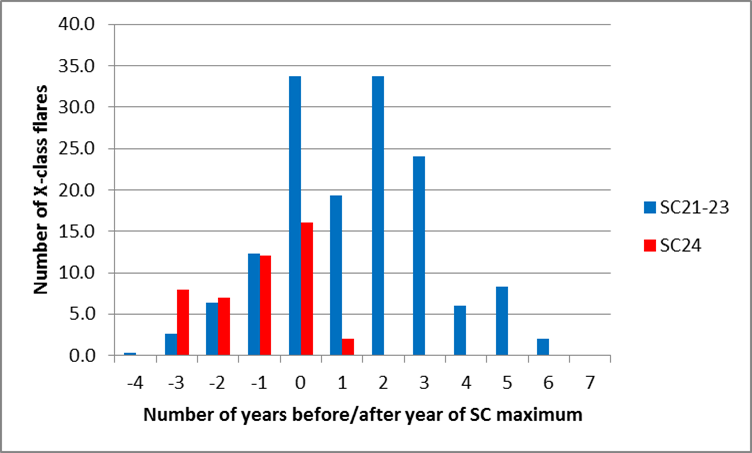
A period of one year without X-class events is not exceptional, with the current one far from being the longest. Since the GOES observations started in 1976, the current period (May 2015-May 2016) would rank only on the 7th place. The longest period was from 14 December 2006 till 15 February 2011 (1524 days!), during the latest solar cycle minimum. Another very long period occurred during the declining phase of SC22, when no X-class flare was observed between 3 November 1992 and 9 July 1996. This can be seen in the graph underneath where on the curve with the smoothed evolution of the sunspot number (blue), months with 1 or 2 X-class flares are indicated by green dots, 3 to 9 extreme events by yellow dots, and 10 or more X-class flares by red dots. So far, no month with 10 or more X-class flares has been observed during SC24 (no red dots).
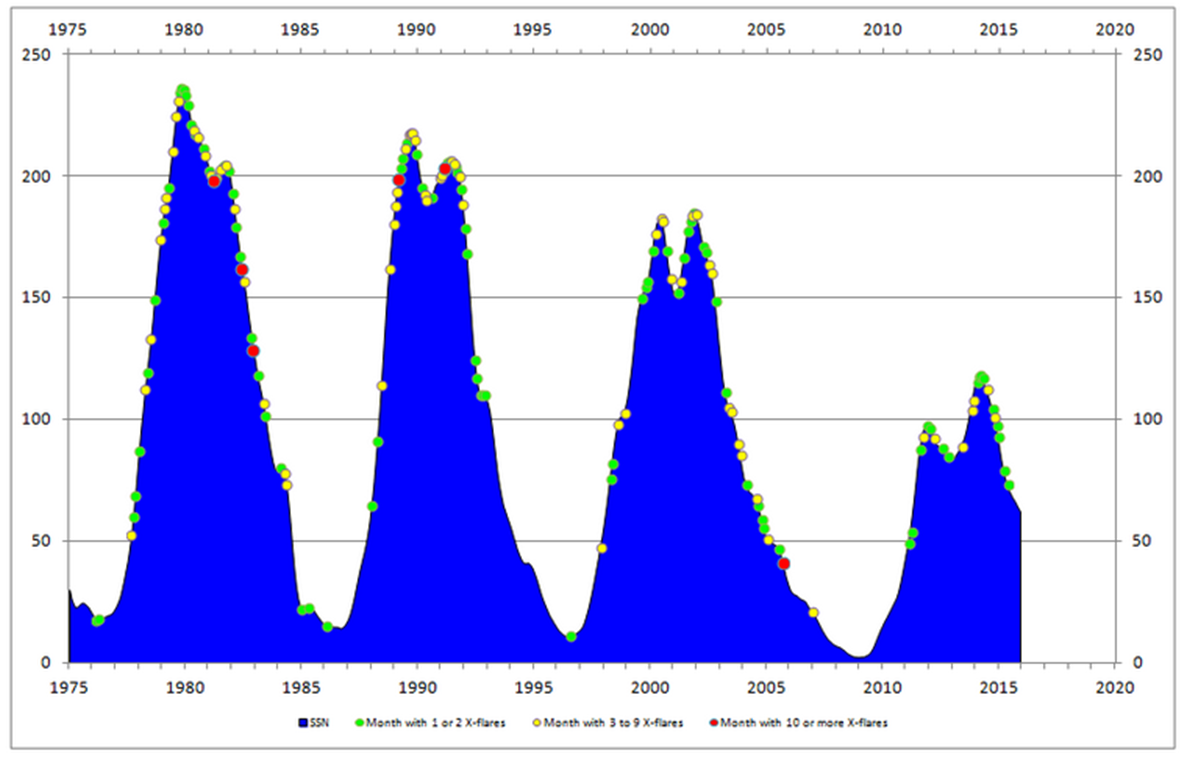
Mercury Transit - May 9
On Monday 9 May, between 13:12:19 and 20:40:33 local time, a Mercury transit across the solar disk will be visible in its entirety from Belgium. This event will not be visible with the naked eye. A (small) telescope will be required.
Solar telescopes in Uccle will closely monitor this spectacle. Solar satellites will also be on the look out, so that even in the event of bad weather and cloud cover, the transit can be observed. All the images and movies will be collected on our transit webpage:
http://sidc.be/transit2016/index.php
Mercury is the smallest and innermost planet of the solar system. It will be visible as a tiny black dot transiting the solar disk in the course of about 7 hours.
A transit is a very spectacular example of the finely tuned planetary motions in our solar system. They are also fairly rare events compared to solar eclipses, with only 14 transits visible this century. The last Mercury transit visible from Belgium dates already back from 7 May 2003, while the next one on 11 November 2019 will only be partially visible.
The planetarium, Brussels (Check http://www.planetarium.be ) will point its telescopes from 13:00 onwards to the Sun so that you can witness the transit with your own eyes. Everybody is welcome!
Solar image from HMI onboard of the satellite SDO taken on April 29 with an estimation of the size of Mercury.
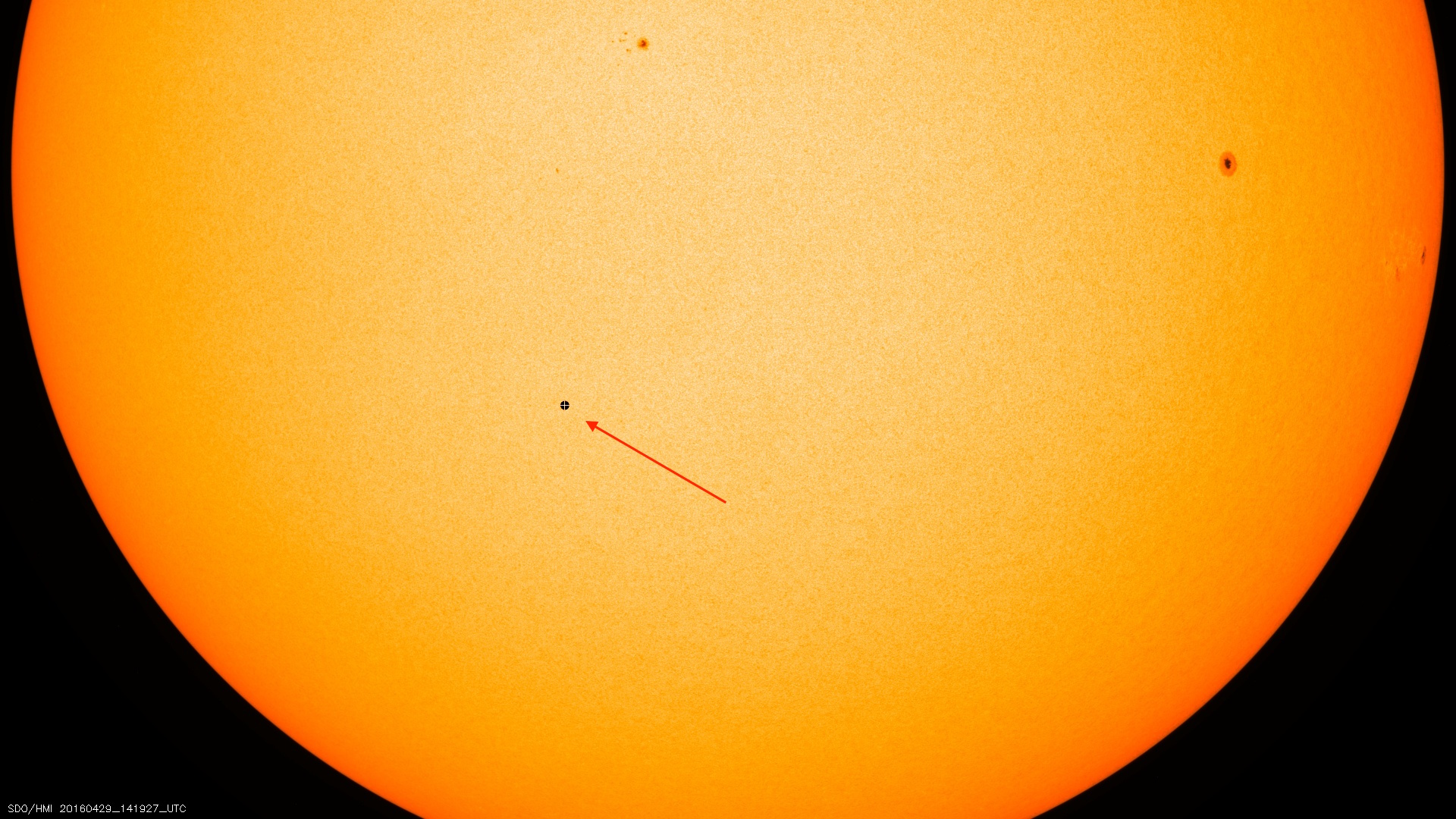
Predicted configuration of the Mercury transit as seen by SWAP onboard of the telscope PROBA2.
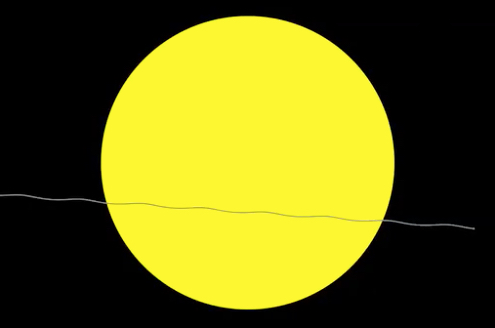
The Mercury transit of 8 November 2006 seen by SOHO/HMI
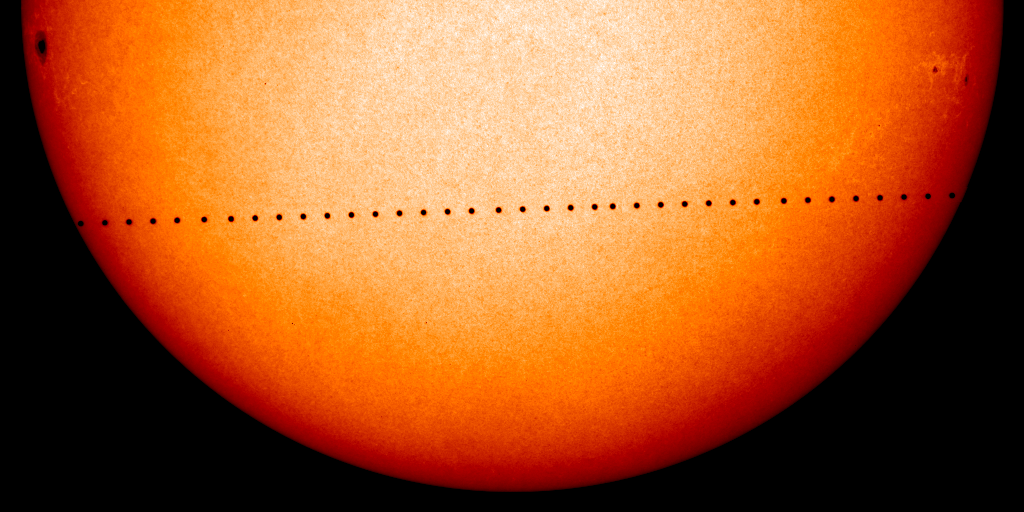
PROBA2 Observations (25 Apr 2016 - 1 May 2016)
Solar Activity
Solar flare activity fluctuated between very low and low during the week.
In order to view the activity of this week in more detail, we suggest to go to the following website from which all the daily (normal and difference) movies can be accessed:
http://proba2.oma.be/ssa
This page also lists the recorded flaring events.
A weekly overview movie can be found here (SWAP week 318).
http://proba2.oma.be/swap/data/mpg/movies/weekly_movies/weekly_movie_2016_04_25.mp4
Details about some of this week's events, can be found further below.
Thursday Apr 28
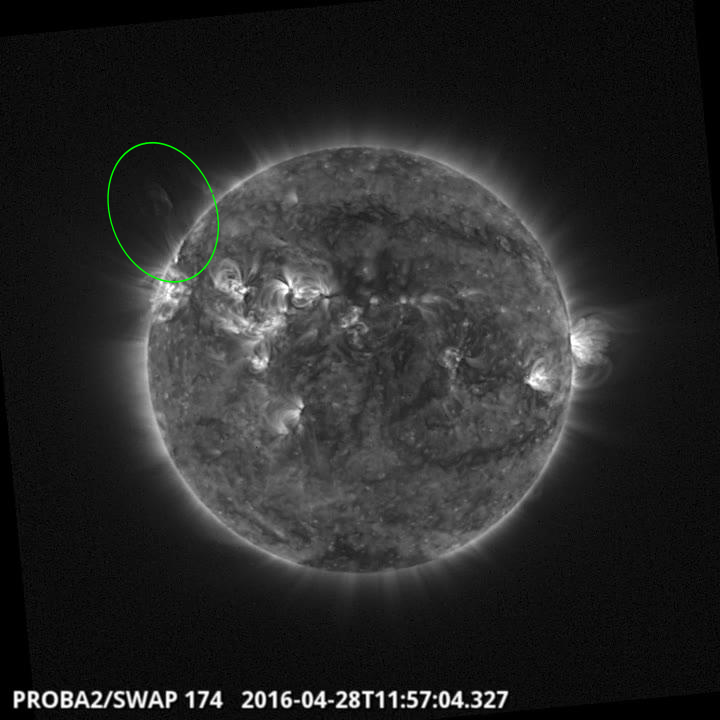
A slow eruption was observed by SWAP on the northwest limb of the Sun at 11:57 UT on 2016 Apr 28
Find a movie of the event here (SWAP movie)
http://proba2.oma.be/swap/data/mpg/movies/20160428_swap_movie.mp4
Friday Apr 29
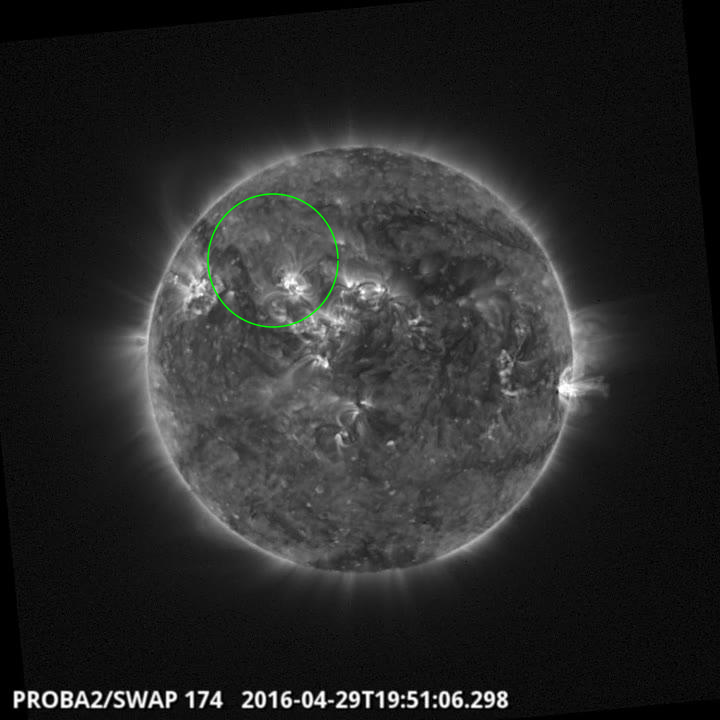
An eruption was observed by SWAP on the northwest quadrant of the Sun at 19:51 UT on 2016 Apr 29
Find a movie of the event here (SWAP movie)
http://proba2.oma.be/swap/data/mpg/movies/20160429_swap_movie.mp4
Sunday May 01
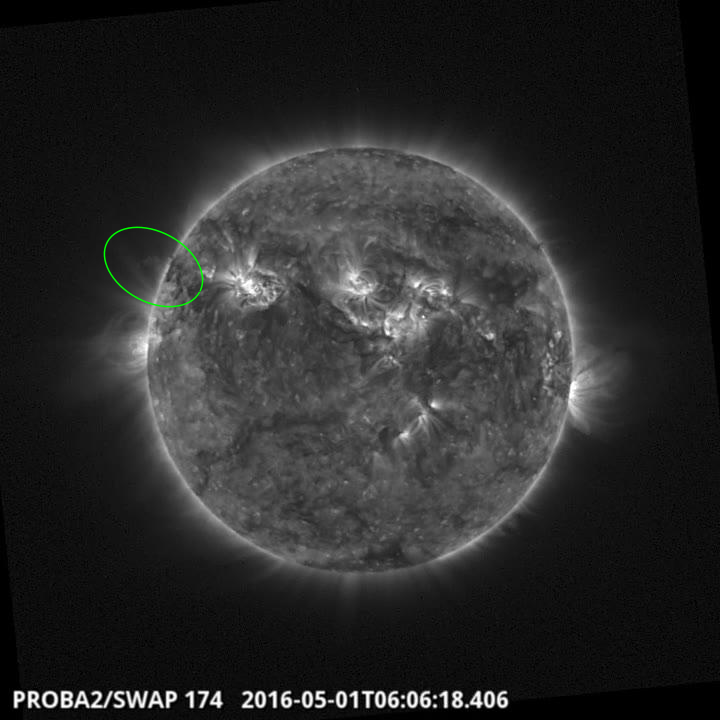
A small back sided eruption was observed by SWAP near the the northeast limb of the Sun at 06:06 UT on 2016 May 01
Find a movie of the event here (SWAP movie)
http://proba2.oma.be/swap/data/mpg/movies/20160501_swap_movie.mp4
Review of solar and geomagnetic activity
SOLAR ACTIVITY
Solar activity was low throughout the week. Seven minor C-class flares occurred, from NOAA ARs 2535 (Catania 63) and 2539 (Catania 66 and 67). There were four ARs at the beginning of the week and six at the end, all with alpha or beta magnetic field configuration. On April 28 there were three minor CMEs, two originating from NOAA AR 2535 (Catania 63), which was located close to the central meridian, and one from a filament eruption in the north-east limb, they were not geoeffective.
GEOMAGNETIC ACTIVITY
The Earth was inside the fading effect from a fast speed stream on Monday and Tuesday, geomagnetic conditions were mostly unsettled. The rest of the week was mostly quiet, until Sunday when another fast speed stream (reaching only 500 km/s on Sunday, with fluctuating Bz up to -10 nT) created active conditions locally at Dourbes (K = 4) and up to major storm conditions at planetary levels (Kp = 6).
The International Sunspot Number
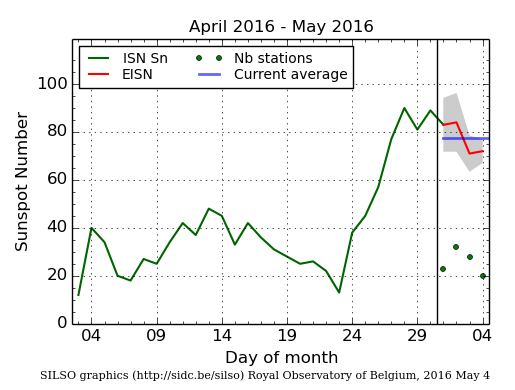
The daily Estimated International Sunspot Number (EISN, red curve with shaded error) derived by a simplified method from real-time data from the worldwide SILSO network. It extends the official Sunspot Number from the full processing of the preceding month (green line). The plot shows the last 30 days (about one solar rotation). The horizontal blue line shows the current monthly average, while the green dots give the number of stations included in the calculation of the EISN for each day.
Review of ionospheric activity (25 Apr 2016 - 1 May 2016)
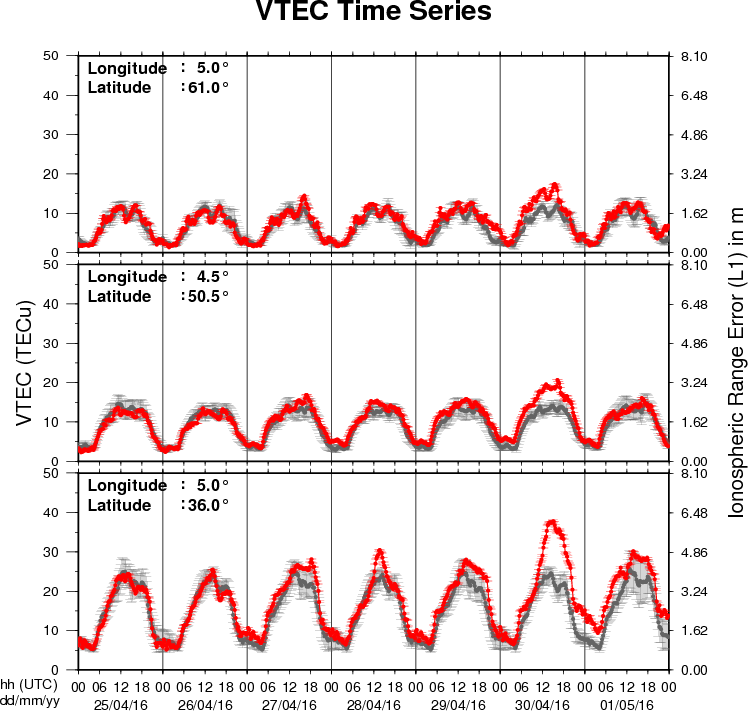
The figure shows the time evolution of the Vertical Total Electron Content (VTEC) (in red) during the last week at three locations:
a) in the northern part of Europe(N61°, 5°E)
b) above Brussels(N50.5°, 4.5°E)
c) in the southern part of Europe(N36°, 5°E)
This figure also shows (in grey) the normal ionospheric behaviour expected based on the median VTEC from the 15 previous days.
The VTEC is expressed in TECu (with TECu=10^16 electrons per square meter) and is directly related to the signal propagation delay due to the ionosphere (in figure: delay on GPS L1 frequency).
The Sun's radiation ionizes the Earth's upper atmosphere, the ionosphere, located from about 60km to 1000km above the Earth's surface.The ionization process in the ionosphere produces ions and free electrons. These electrons perturb the propagation of the GNSS (Global Navigation Satellite System) signals by inducing a so-called ionospheric delay.
See http://stce.be/newsletter/GNSS_final.pdf for some more explanations ; for detailed information, see http://gnss.be/ionosphere_tutorial.php
Future Events
For more details, see http://www.spaceweather.eu/en/event/future
Space Weather REDI Bootcamp
Start : 2016-06-07 - End : 2016-06-17
SW REDI summer Bootcamp is a two-week free training in space
weather, with the first week focusing on the fundamentals of space
weather and the second week on intensive forecaster training, with
alternative opportunities to discuss research topics with the CCMC
and NASA GSFC scientists.
The program is ideal for undergraduate and graduate students
interested in space weather forecasting or in space weather related
research but is also beneficial for scientists, engineers,
educators, mission operators, competitive high school students and
all others seeking to gain some basic knowledge regarding space
weather.
Website:
http://ccmc.gsfc.nasa.gov/support/SWREDI/bootcamp/
The Scientific Foundation of Space Weather
Start : 2016-06-27 - End : 2016-07-01
Website:
http://www.issibern.ch/program/workshops.html
Global Modelling of the Space Weather Chain in Helsinki, Finland
Start : 2016-10-24 - End : 2016-10-28
This event brings together solar, heliospheric, magnetospheric,
and ionospheric communities to discuss the current state and future
challenges in global modelling of the entire space weather chain.
Major developments in forecasting space weather, and understanding
the effects of solar eruptions requires increased communication and
collaboration of these often rather distinct communities. We
welcome submissions from these modelling communities and also
synergetic studies utilising both observations and numerical
models.
Website:
https://pnst.ias.u-psud.fr/sites/pnst/files/global_modelling_space_weather_oct2016.pdf
Solar Orbiter Workshop 7: Exploring the solar environs in Granada, Spain
Start : 2017-04-03 - End : 2017-04-06
This event will be hosted by the Instituto de Astrofisica de
Andalucia - CSIC. Please mind that on April 7th the 20th SWT
meeting will take place at the same venue.
Website: Unkown
New documents in the European Space Weather Portal Repository
See http://www.spaceweather.eu/en/repository
STCE - De Zon
This is the theoretical course on the Sun and Spaceweather at the MIRA Solar Observatory in their lecture series for beginning amateur astronomers. Given on 13 April 2016 for 40 attendees.
http://www.spaceweather.eu/en/repository/show?id=600
STCE Annual Report 2014
The STCE Annual Report 2014 is a compilation of the activities done in 2014 within the frame of the Solar-Terrestrial Centre of Excellence (STCE). This report continues the style from the previous editions. Hence, as it is targeting a more general public, it presents only a selection of the 2014-activities in easy-to-digest summaries. These summaries emphasize the intense collaboration between the institutes at the Space Pole, as well as with our external partners. We hope you enjoy this report, which features articles on solar and space weather activity, the Open Doors at the Space Pole, the 11th European Space Weather Week, helmet streamers, a new solar coronagraph, total solar irradiance, the Belgian ALC network, SPENVIS-NG, and much more... Happy reading!
http://www.spaceweather.eu/en/repository/show?id=601
